|
Terminology
We termed our synthesized targeted gene therapy vector "GenSniper" to describe the cell specificity based on the biobrick targeted approach. Unlike the traditional gene therapy vector able to infect a variety of cells, GenSniper will be capable of specifically infecting one type of cells, just as snipers specifically shoot one target at high resolution.
 A sniper in the movie Enemy at Gates. We termed our gene therapy vector GenSniper because the design allows it to target specific cell precisely, just as a sniper does Apparently, other approaches (especially fusion proteins) have been reported for targeted gene therapy. As for our project, we aim at providing a standardized modification principle for targeted gene therapy, namely the introduction of Targeted BioBrick. With the cell-specific peptides changed by PCR, the synthesized GenSniper will be able to target different type of cells. Targeted BioBrick can also be incorperated onto different proteins for different function into a specific type of cells.
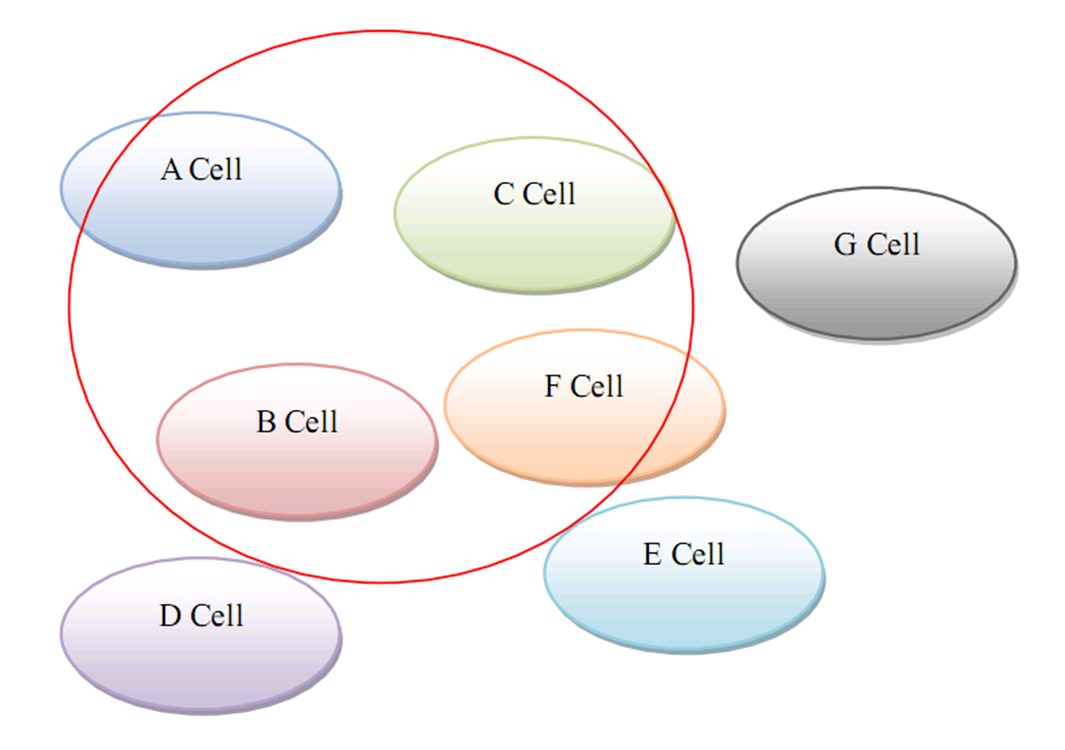 Traditional gene therapy vector
Moreover, we termed the whole project "SynGenome Based GenSniper" or SBG, since the GenSniper we constructed is based on the synthetic genome which recombined the lambda and adenovirus genome for human practice. Reconstruction the genome of life form is also a hot area in synthetic biology, and our innovation is the synthesis of the viral genome that serves human practice. We also proposed two approaches, Bottom-Up and Top-Down, for genome synthesis procedures.
Interestingly, the abbreviation SBG can also be known as Synthetic Biology in Gene Therapy, which is the topic of our project. We hope our attempt in iGEM09 can do help to the application of synthetic biology in clinical uses such as gene therapy.
Implication on Synthetic Biology
Synthetic Genome
As suggested by the project title, our Project is equivalent to apply synthetic biology concepts and standards at the genomic level, constructing a genome which is neither adenovirus nor bacteriophage lambda genome. This synthetic genome, however, is capable of producing standardized and targeted gene therapy vectors for human clinical practice. Also, we use the abstraction principle in our design of this genome in order to make the synthetic gene therapy vector easy to be further modified, improved and industrialized. This project implicates the development of synthetic biology come to a higher level of living organism, the genome, which meets the trends of synthetic biology innovation.
Synthetic Biology in Gene Therapy
As implied by the abbreviation SBG of our project, we hope our attempt in iGEM09 can do help to the application of synthetic biology in clinical uses such as gene therapy. As for the area of gene therapy, the vector is a bottleneck topic. As for gene therapy vectors, the targeted function is a bottleneck technique. The introduction of the biobrick idea will benefit this area in long term, since the targeted gene delivery itself can be decoupled into several interrelated processes. Moreover, Targeted Biobrick can industrialize the design of targeted functional proteins or gene therapy vectors as well as the GenSniper with variable cell specificity.
From Shotgun to Sniper
Previous attempts on targeted gene delivery may involve the fusion between the gene therapy vector and a receptor protein of specific cell type(s). Before the standardized approach to select specific receptors for any given types of cells, those attempts may not easy to be reproduced. Our project suggests a standardized way of targeted peptide modification. For example, if you change your bullet (cell-specific peptides generated by phage display), you will be able to, in theory, precisely target your desired gene to any given type of cells. Of course, the Targeted Biobrick proposal needs more revision to meet the industrialization and clinical uses. We hope this attempt can draw the attention of scientists working with gene therapy on the convenience of biobricks.
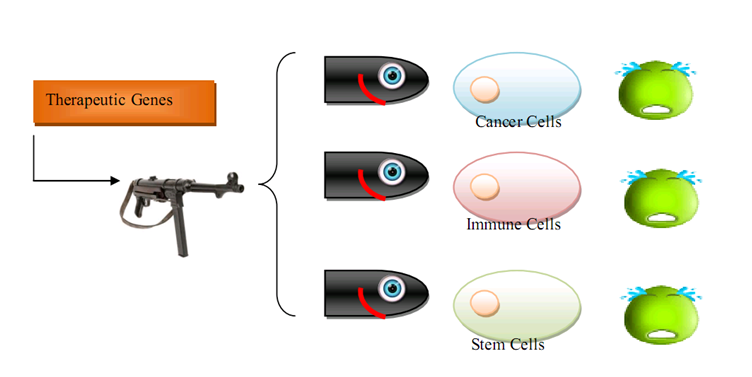 Tranditional gene therapy targeting  Gene therapy targeting by GenSniper Targeted Biobrick Platform
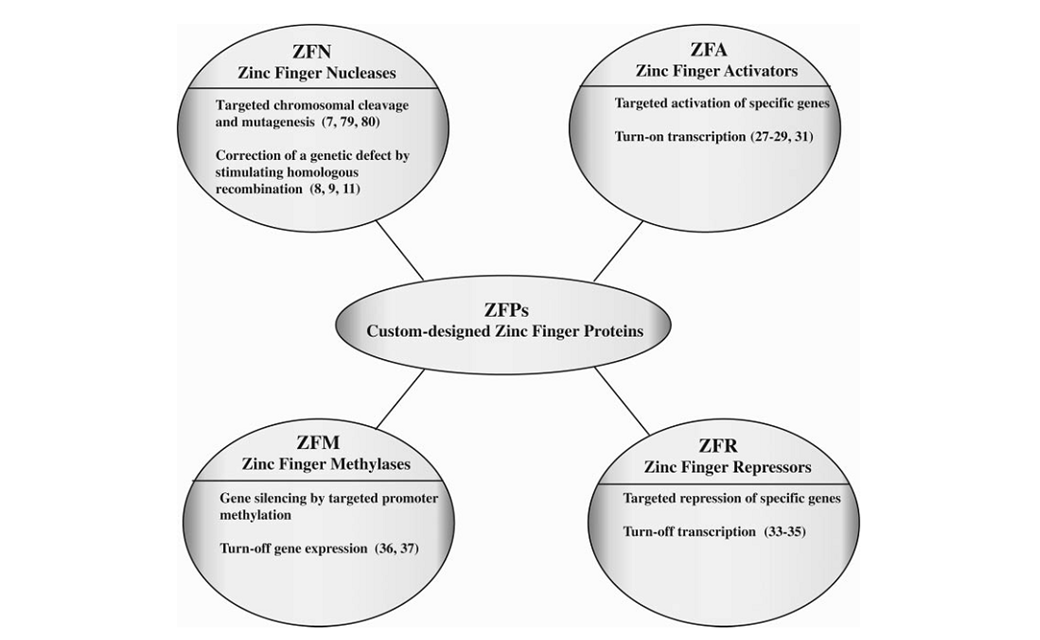 Zinc Finger Protein Platform Our defintion of Targeted Biobrick in gene therapy is quite similar with the booming area in zinc finger nuclease and zinc finger proteins. Attempts in zinc finger proteins do reflect a concept of modulization at the protein level, however the standardized principles of restriction site prefix or surfix have not been widely applied in the construction of zinc finger protein platform.
Since our Targeted Biobrick accords the synthetic biology's standardization principle at both the DNA and the protein level, we also proposed a Targeted Biobrick Platform approach for researchers to contruct targeted proteins of different functions based on standardized rules, which will significantly faciliate the application and industrialization of gene therapy and related fields.
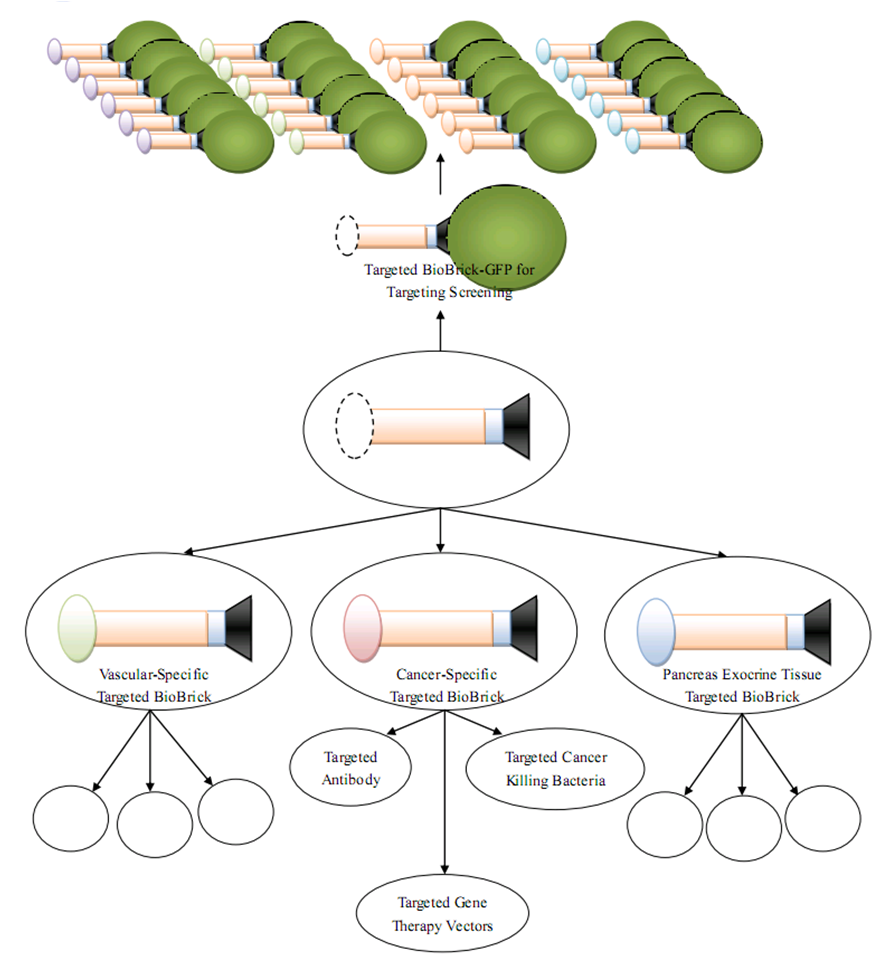 Targeted BioBrick Platform Large-Scale Peptide Modification on Specificity Screening
Since the interchangeable module of our synthetic Targeted BioBrick is the small peptide, a large-scale modification of different peptides on the same Targeted BioBrick scanfold is recommended. As for definitive peptides of known specificity, large-scale modification can produce an industrialized library for standardized targeted gene therapy vector or other synthetic machines based on Targeted BioBrick. As for randomized peptides, large-scale modification can be used for the screening of peptides specific for a given type of cells.
Considering the importance of large-scale peptide modification, we contributed a BBF RFC (BBF RFC 46) to standardize future work.
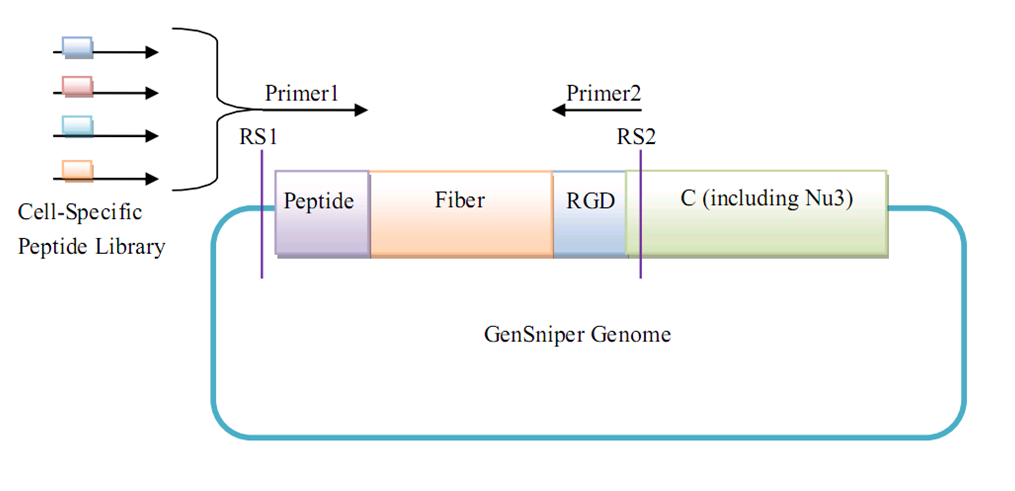 Peptide modification procedure for Targeted BioBricks on GenSniper Safety
One of the most crucial concerns about the safety of gene therapy vectors is the immunotoxicity. For example, adenovirus gene therapy vectors are subjected to this danger compared with adeno-associated virus. A few cases of death due to the viral or funga infection during gene therapy approaches have been reported.
Safety Concerns about SynGenome Based GenSniper
As for our project on engineered gene therapy vector based on bacteriophage lambda genome, main concerns may come from at least two aspects. First, the immunotoxicity of the structural proteins of the viroins. Second, possible cytotoxicity on the in vivo transfected target or non-target cells.
1) Immunotoxicity of the structural proteins of the viroins
Our synthetic gene therapy vector is composed of mainly two types of sructural proteins, the head structural proteins of bacteriophage lambda and the targeted biobrick protein. As indicated by recently experiments and application of phage gene therapy vectors, the cytotoxicities of phage proteins are far less toxic than the proteins of tranditionally used gene therapy vectors such as adenovirus. Contrarily, the application of our synthetic gene therapy vector may contribute to reduction of the immunotoxicity of gene therapy vector structural proteins.
In our projct, C-Targeted BioBrick is composed of four functional domains, the C protein of bacteriophage lambda, RGD domain, fiber protein from adenovirus genome and targeted peptide selected from phage display. C protein, of a bacteriophage lambda origin, is less toxic to target cells. Fiber protein is the L% gene product of adenovirus, while the proteins that are responsible for immuno-response are early proteins such as E2A. RGD domain is common in cell-cell junctions and unlikely to be involved in immuno-response. The cell-specific peptide might be potentially unsafe, especially randomly generated peptides. So cellular and animal experiments are recommended for Targeted BioBrick characterization before clinical uses.
2) Possible cytotoxicity on the in vivo transfected target or non-target cells
Except for Therapeutic DNA, the only thing that has been delivered into the cells is the viroin. Since the Targeted Biobrick is from adenovirus which is designated to be degraded, the whole viroin structure is very likely to be degraded in cells. Admittedly, the cytotoxicity of the viroin proteins (Nu1, A, W , B, C-Targeted Biobrick, D, E, FI, FII) should be carefully examined before any clinical use.
Safety Concerns about Plasmid GenSniper
Our wetlab work did not involve Plasmid GenSniper. Nevertheless, plasmid vectors in gene therapy has been reported among the safest despite its low efficiency and specificity. Inducing a Targeted Biobrick is a tempting approach, but concerns about the safety of this Targeted Biobrick also need careful attention.
Considering our drylab design, the DNA-binding protein is composed of a lambda repressor and a Targeted Biobrick. The latter is very likely to be safe because of its adenovirus origin (the adenovirus fiber is obvious not responsible for the immunotoxicity and cytotoxicity). Lambda repressor is also possbile to be degraded immediately without any specific protein sorting signal. Of course, clinical uses will require further identification of the toxicity of related proteins.
Safety Issues Q & A
1) Would any of your project ideas raise safety issues in terms of: researcher safety, public safety, or environmental safety?
Yes.
The researcher's safety is unlikely to be undermined, since we just use the fiber protein from adenovirus and the proteins from bacteriophage lambda are far less toxic.
The designed GenSniper approach does involve public safety concerns, as all the gene therapy vectors do. Safety concerns include the immunotoxcity and cytotoxicity of the gene therapy vector. The targeted function of the gene therapy vector is also of great importance. If with a poor efficiency, the gene therapy vector might cause unpredictable effects if infecting non-target cells. Possible integration into the target or non-target cell genome will also raise the problem of tumor genesis. Fortunately, our project do not involve the virus that lead to integration, so the possibility of tumor genesis is very small.
There are seldom environmental safety concerns. The possibility of phage pollution into the nearby laboratory and eco-system is slim, for the engineered GenSniper does not contain a tail for infection.
2) Is there a local bio-safety group, committee, or review board at your institution?
Yes.
School of Life Sciences in Tsinghua University has a well-defined system for valuating the safety of the experimental system. Our project was questioned and evaluated by more than 15 professors of Tsinghua on safety issues.
Moreover, we also inquired a local cooperation specifying in gene therapy for possible safety problems regarding our project.
3) What does your local bio-safety group think about your project?
Since our project does not involve human experiments and the engineered GenSniper does not inherit the concerns on both phage and animal virus, they think our project is safe.
4) Do any of the new BioBrick parts that you made this year raise any safety issues? If yes, did you document these issues in the Registry?
We have documented Targeted BioBrick in the Registry for safety issues. However, as for basic research, this BioBrick will not raise safety issues to researchers. As for clinical uses, this BioBrick should be carefully characterized as other engineered proteins for clinical use.
Safety Characterization Approaches
As for the possible safety concerns, we outlined the characterization system for safety at two levels, cellular level and individual level.
Cellular Safety Characterization Approach
As for cellular level, we suggest researchers to use the GFP-fused Targeted BioBrick to characterize the localization of Targeted BioBrick in the target cells. For cell viability, MTT staining is required. FACS should be applied for apoptosis, autophagy and senescence identification to ensure that the Targeted BioBrick based synthetic machine will not affect the fate of the targeted cells. Gene chip and Western blotting are recommend for reprogramming approaches based on Targeted BioBrick. Western blotting can also be used to identify whether contain oncogenes (such as ras, myc) has been upregulated.
 Cellular safety characterization approach Individual Safety Characterization Approach
As for individual level, Targeted BioBrick-GFP can be used to test whether the desired machines (no matter protein complexes, drugs or gene therapy vectors such as GenSniper) have been delivered to contain tissues. If no, they may cause potential side effects.
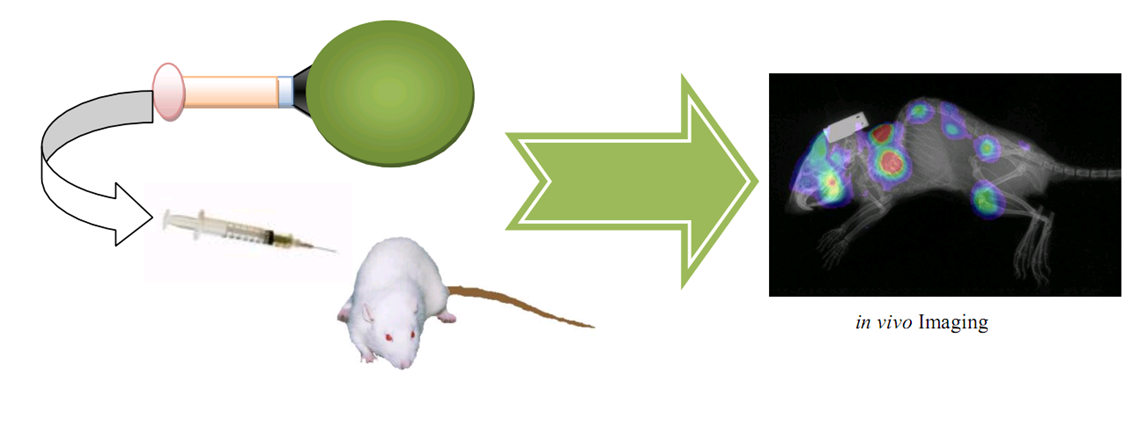 Individual safety characterization approach Ethics
Our project involves the ethic question that whether the synthetic life form challenges the existing human ethic system.
As for gene therapy approaches, another ethic issue is whether the changes of the target cell genome of the patients should be permitted via additional documentation. This is because the gene therapy, unlike conventional drug therapy, does affect the private genetic information of the patients.
The rapid development of gene therapy has brought hope for patients who suffer from genetic deficiency. At the same time, relating ethical issues are also involved. Most of the concerns come from the safety aspects. Recently, problems regarding the regulation of treatment application, public policy making have also emerged.
In clincal practice, gene therapy is conducted in such a way. The infected cells are removed from patients, genes for therapy are transfected through vectors like modified virus. After that, these cells are placed back into the body. Generally speaking, the cells being genetically changed can be both somatic cells and germline cells.
Though gene therapy seems to solve clinical problems in a fundamental way---to permanently revise the genetic errors, the subsequent risks could not be neglected. On some occasions, this technique can be life-threatning. There is a report that a 36-year-old woman with rheumatoid arthritis died in July while participating in a gene-therapy clinical trial. Some experts say she shouldn't have received such an unpredictable, potentially dangerous treatment in the first place. What makes the matter worse is that her physician who suggests her to take this therapy, is involved in a trial of gene therapy with commercial interests. The regulation of gene therapy is therefore under hot debate.
Furthermore, we have conducted a local questionaire for evaluating related issues on ethics of gene therapy. The results are showed below
1) Do you think gene therapy raises ethic concerns?
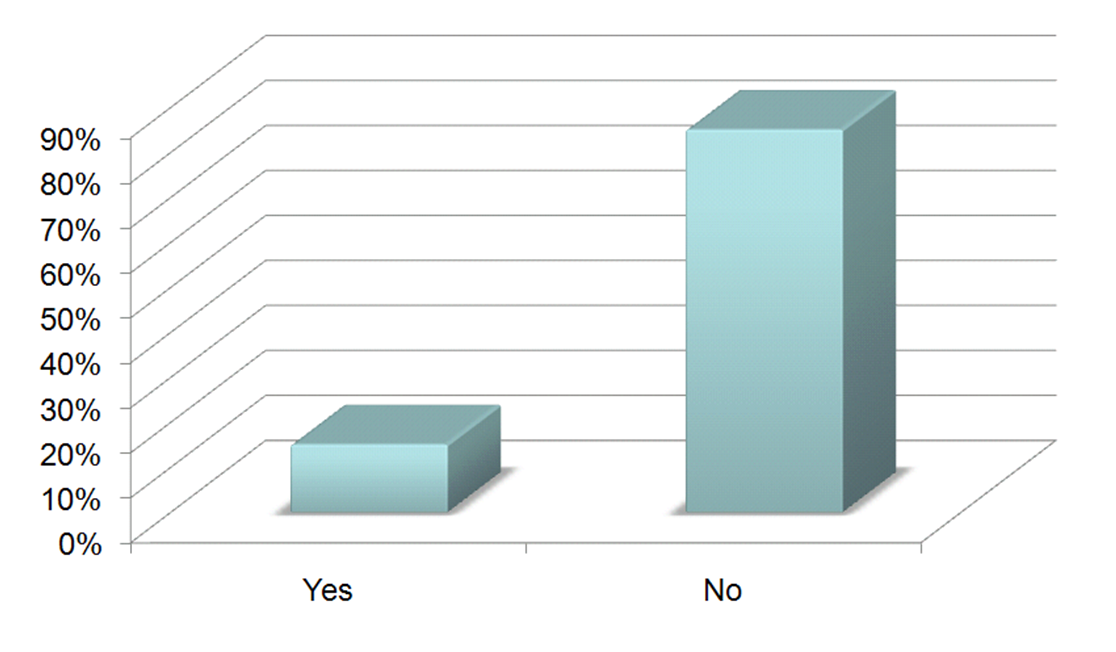 Do you think gene therapy raises ethic concerns? This question is served for testing the ethic concerns regarding the topic of our project. The majority of the respondents generally do not think the gene therapy approaches raise serious concerns compared with other biotechnologies such as human cloning. However, it does raises concerns on human public health and safety.
2) Do you synthetic genome approaches such as synthesizing life forms raises?
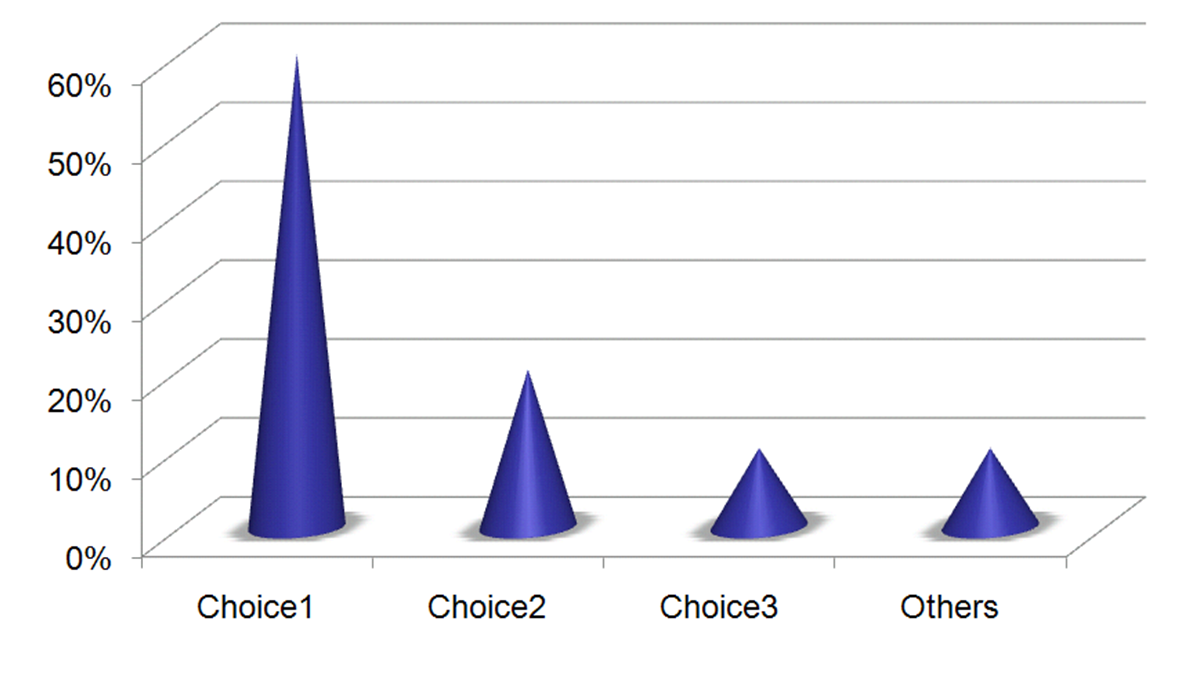 Do you synthetic genome approaches such as synthesizing life forms raises? Choice1, it may have changed the view of human-beings on life but do not trigger severe ethic problems; Choice2, it challenged the existing ethic system which should be prohibitted; Choice3, it has shaped the existing ethic system but do not have negative effects on it The second question involves the ethic question regarding the core technique used in our project, which also has the largest possibility to be ethically concerned. Generally, the respondents do not think this technique is of a big ethic concern. One of those selected "others" (a student from medical school) suggested as follows: Lewis Wolpert said, once Science is value-free, as it explains the world as it is. Ethical issues arise only when science is applied to technology – from medicine to industry.
3) Do you think the ethic preference of the patients should be concerned by the doctors before gene therapy approaches?
 Do you think the ethic preference of the patients should be concerned by the doctors before gene therapy approaches? The third question is designed to ensure a well-defined logic on ethic concerns. Here we do find a potentially siginificant problem that has not been reported previously. The problem is: the patient's genome in some of the cells has been modified as described before, whether a standardized documentation should be required before gene therapy? We do think this documentation is necessary, especially when the technical bottleneck is overcomed.
In summary, though gene therapy is primarily designed to cure disease, in theory, it could modify any gene of interest. Hence, we also face the possibility that gene therapy is used for other purposes instead of treatment. For example, in January of 1993, it was reported in USA Today that an 11-year-old boy was receiving gene therapy treatments at a cost of $150,000 per year to increase his height. At 4' 11", four inches below average height, he was tired of being picked on at school for being short. His father was quoted in the article as saying, "You want to give your child that edge no matter what. I think you'd do just about anything."
Innovation and Human Practice
By comparing the structural and functional similarity of bacteriophage lambda and adenovirus, this project applies the synthetic biology strategy at the genomic level, transplanting the complex process of viral gene therapy vector production into prokaryotic cells for mass production. This approach makes the industrial production of gene therapy vector easier to standardize and manipulate, which coordinates the standardization, abstraction and decoupling principles of synthetic biology. As for the synthetic engineering of the Targeted Biobrick, we decouple the process of viral infection into two sub-steps, attachment and internalization, which are ensured by the synthetic targeted peptides and RGD domain respectively. Viewed from the overall project, this approach is equivalent to synthesizing a viable form that actually contributes to clinical use. This reflects the synthetic biology’s extension in human practice by learning from nature.
An academic summary is given in our conclusion.
Targeted Gene Therapy for Various Diseases
As for human practice, our GenSniper with Targeted BioBirck can faciliate the development of targeted gene delivery, a bottleneck problem of in vivo human practice approaches regardless of the specific genetic network design after delivery. For example, if modified with cancer stem cell specific Targeted Biobricks, GenSniper will be able to specifically kill cancers. If modified with vascular endothelial cell specific Targeted Biobricks, GenSniper will be able to cure thrombus. Given the in vivo reprogramming results, if modified with pancreas exocrine cell specific Targeted Biobricks, GenSniper will be able to cure diabetes via a more safe and precise reprogramming from exocrine cell to beta-cells.
 GenSniper for cancer therapy  GenSniper for Thrombus curing  GenSniper for in vivo reprogramming  GenSniper for AIDS therapy Industrialized Production and Purification of GenSniper
Another main innovation of our project is the transplantation of eukaryotic production system to prokaryotic production system, which, if fully achieved in the future, may be revolutionary for mass application of gene therapy approaches as well as gene delivery systems for lab work. According to our wetlab and drylab results, we outline and detail a procedure of GenSniper production.
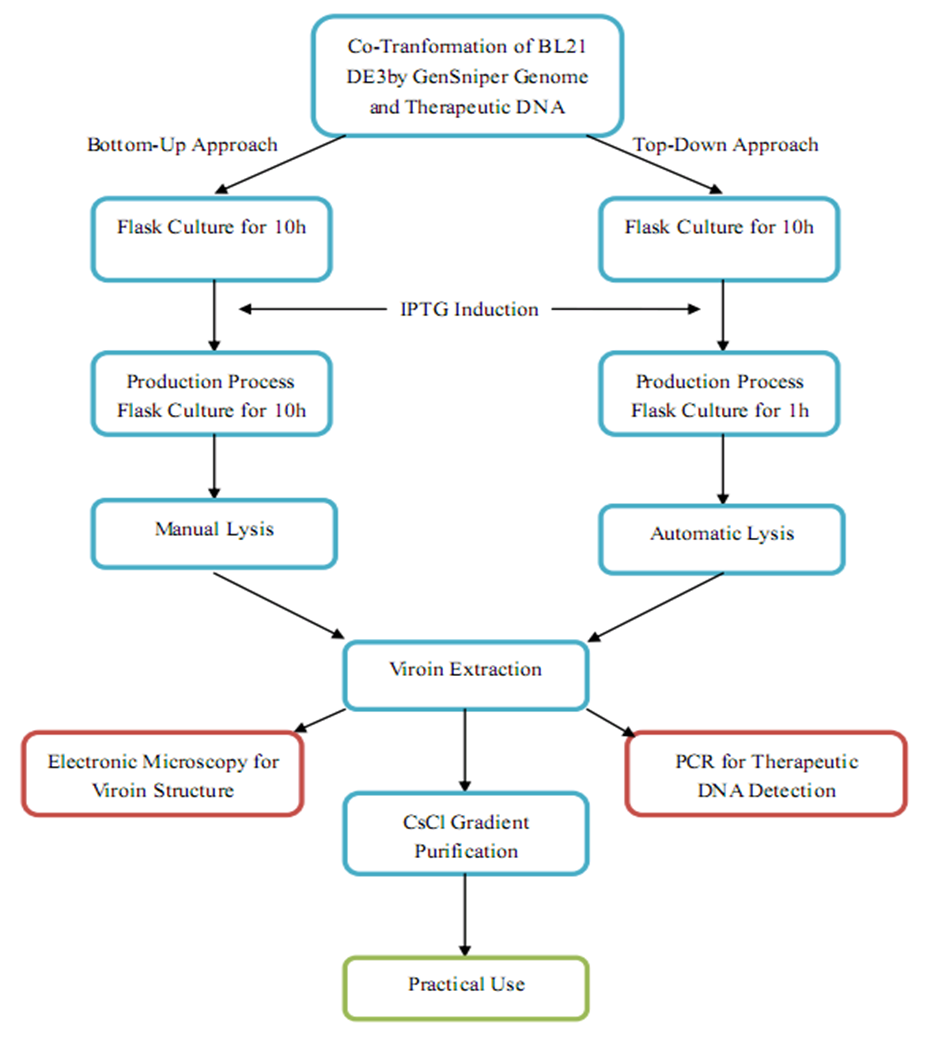 Production Scheme of GenSniper As for further purification, which is not mentioned in our wetlab design, we also propose an easy approach based on another protein modification. This modification is for the residue of the tail structure of bacteriophage lambda, namely FII protein. With a GST tag or other tags available, GenSniper viroins can be easily purified on a large scale, which extend our synthetic biology project to industrialization.
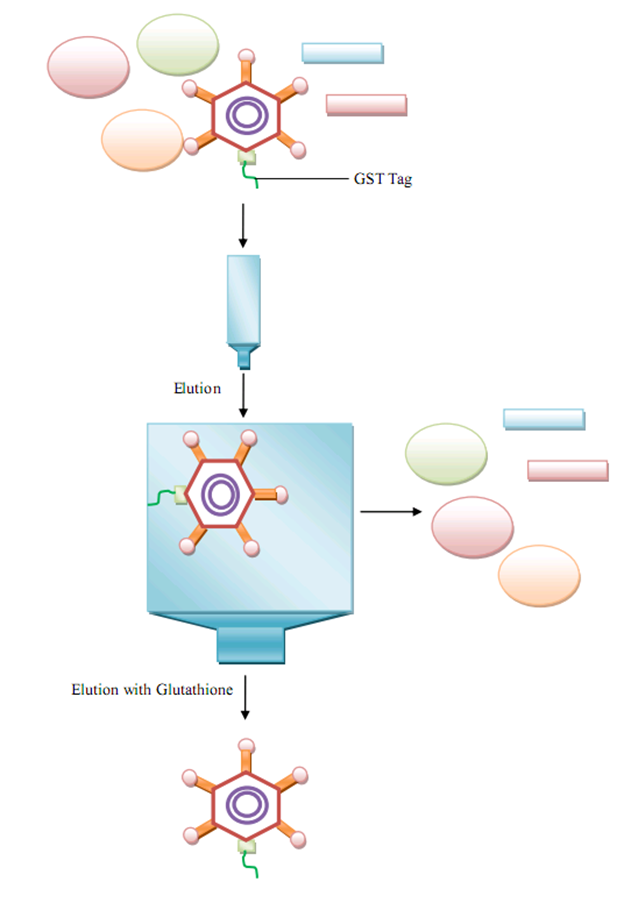 Purification Scheme of GenSniper by GST-tag modified FII Extension of GenSniper Genome to Faciliate Theraputic Genes Expression
As suggested in modeling, E from the GenSniper genome is highly recommended to be modified by NLS, which in turn faciliate the recruitment of Theraputic DNA into the nucleus of the target cells.
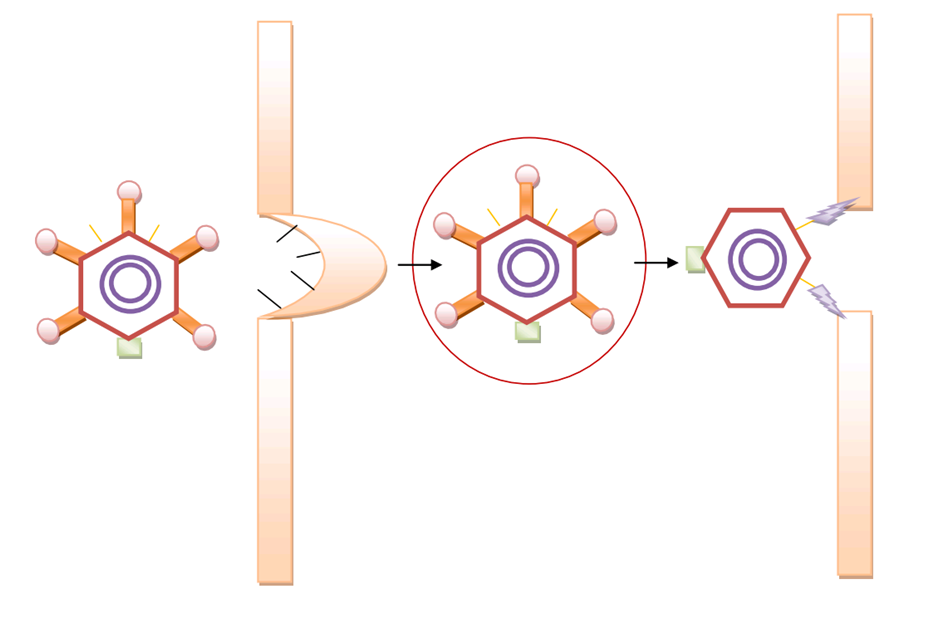 GenSniper Intracellular trafficking model can be ensured by display NLS sequence on E In addition, researchers can also incorporate Mu gene from adenovirus genome into the synthetic GenSniper genome. Since, Mu is responsible for DNA binding and targeting in wildtype adenovirus, this extension will further faciliate the localization of transcription active sites in the nucleus. However, since GenSniper must be produced in prokaryotic system, whether or not Mu is functional needs further investigation.
 GenSniper Nuclear Localization by Mu protein from adenovirus References
[1] David A.Williams, and Christopher Baum. Gene Therapy—New Challenges Ahead. Science. 2003, 302, 400-401.
[2] Marina Cavazzana-Calvo et al.. Immunodeficiency (SCID)-X1 Disease Gene Therapy of Human Severe Combined. Science. 2000, 288, 669-672.
[3] Esmail D. Zanjani, and W. French Anderson. Prospects for in utero human gene therapy. Science. 1999, 285, 2084-2088.
[4] Leland H. Hartwell, Leroy Hood, Michael L. Goldberg, Ann E. Reynolds, Lee M. Silver, Ryth C. Veres. Genetics: From Genes to Genome. McGrawHall, 3rd edition, 2008.
[5] http://en.wikipedia.org/wiki/Gene_therapy
[6] Jerry Guo, and Hao Xin. Splicing out the West?. Science. 2007, 314, 1232-1235.
[7] Chopra Paras, and Akhil Kamma. Engineering life through Synthetic Biology. In Silico Biology 6. http://www.bioinfo.de/isb/2006/06/0038. Retrieved on 2008-06-09.
[8] http://www.syntheticbiology.org
[9] Michael T. M., John M. M., and Jack P. Brock Biology of Microorganisms. Prentice Hall, 12th edition, 2008.
[10] Glen RN, and Phoebe LS. Role of αv integrins in adenovirus cell entry and gene delivery. Microbiology and Molecular Biology reviews. 1999, 63, 725-734.
[11] Yuanming Zhang, and Jeffrey M. Bergelson. Adenovirus Receptors. J. Virol. 2005, 79, 12125–12131.
[12] Miyazawa N, Crystal RG, and Leopold PL. Adenovirus serotype 7 retention in a late endosomal compartment prior to cytosol escape is modulated by fiber protein. J. Virol. 2001, 75, 1387–1400.
[13] Shayakhmetov DM, Eberly AM, Li ZY, and Lieber A. Deletion of penton RGD motifs affects the efficiency of both the internalization and the endosome escape of viral particles containing adenovirus serotype 5 or 35 fiber knobs. J. Virol. 2005, 79, 1053–1061.
[14] Sundar Durai, Mala Mani, Karthikeyan Kandavelou, Joy Wu, Matthew H. Porteus and Srinivasan Chandrasegaran. Zinc finger nucleases: custom-designed molecular scissors for genome engineering of plant and mammalian cells. Nucleic Acids Research, 2005, Vol.33, No.18.
[15]http://www.wired.com/medtech/genetics/news/2007/08/gene_therapy
[16]http://www.ndsu.nodak.edu/instruct/mcclean/plsc431/students/amanda.htm
[17]http://www.molbio.princeton.edu/index.php?option=com_content&task=view&id=253&Itemid=249
|